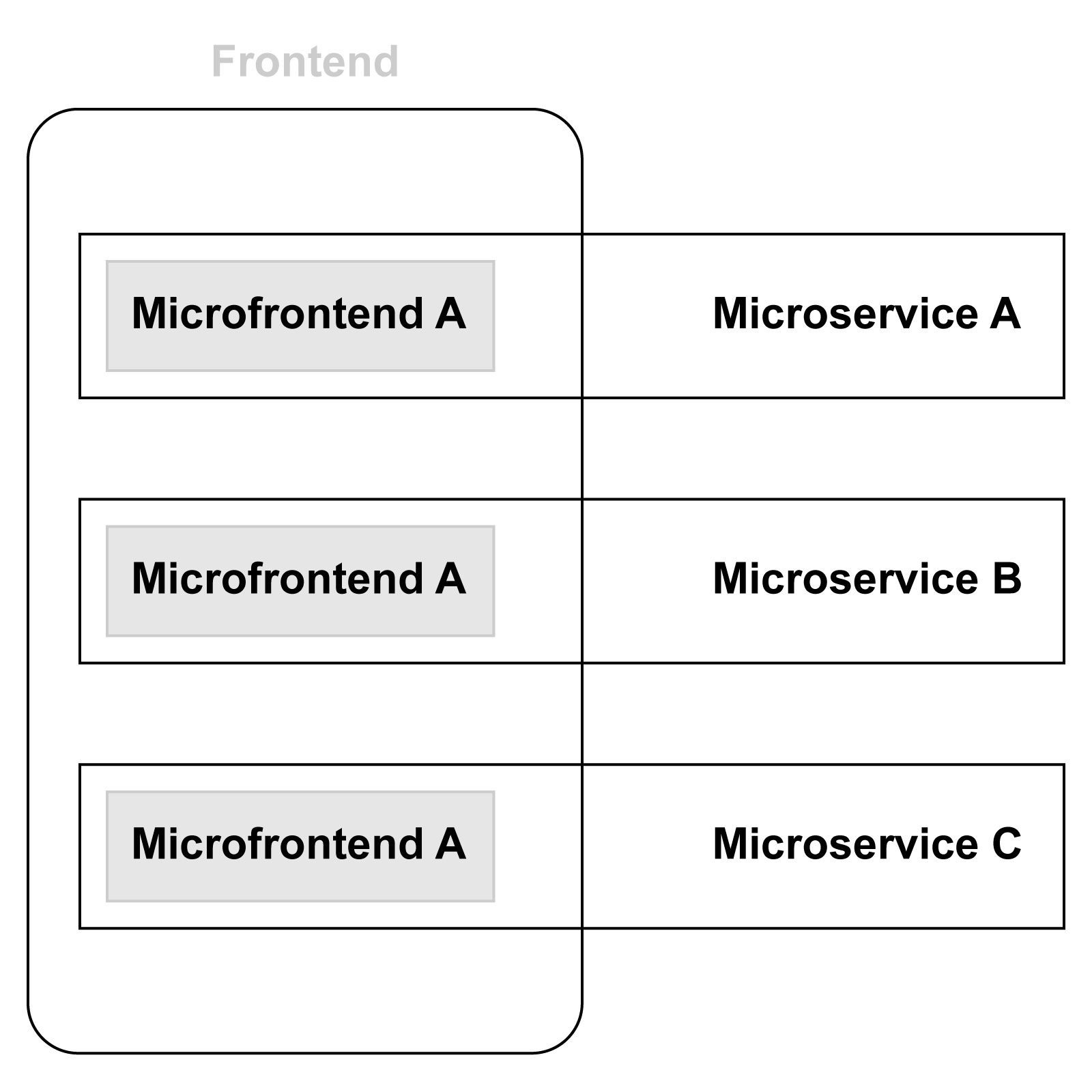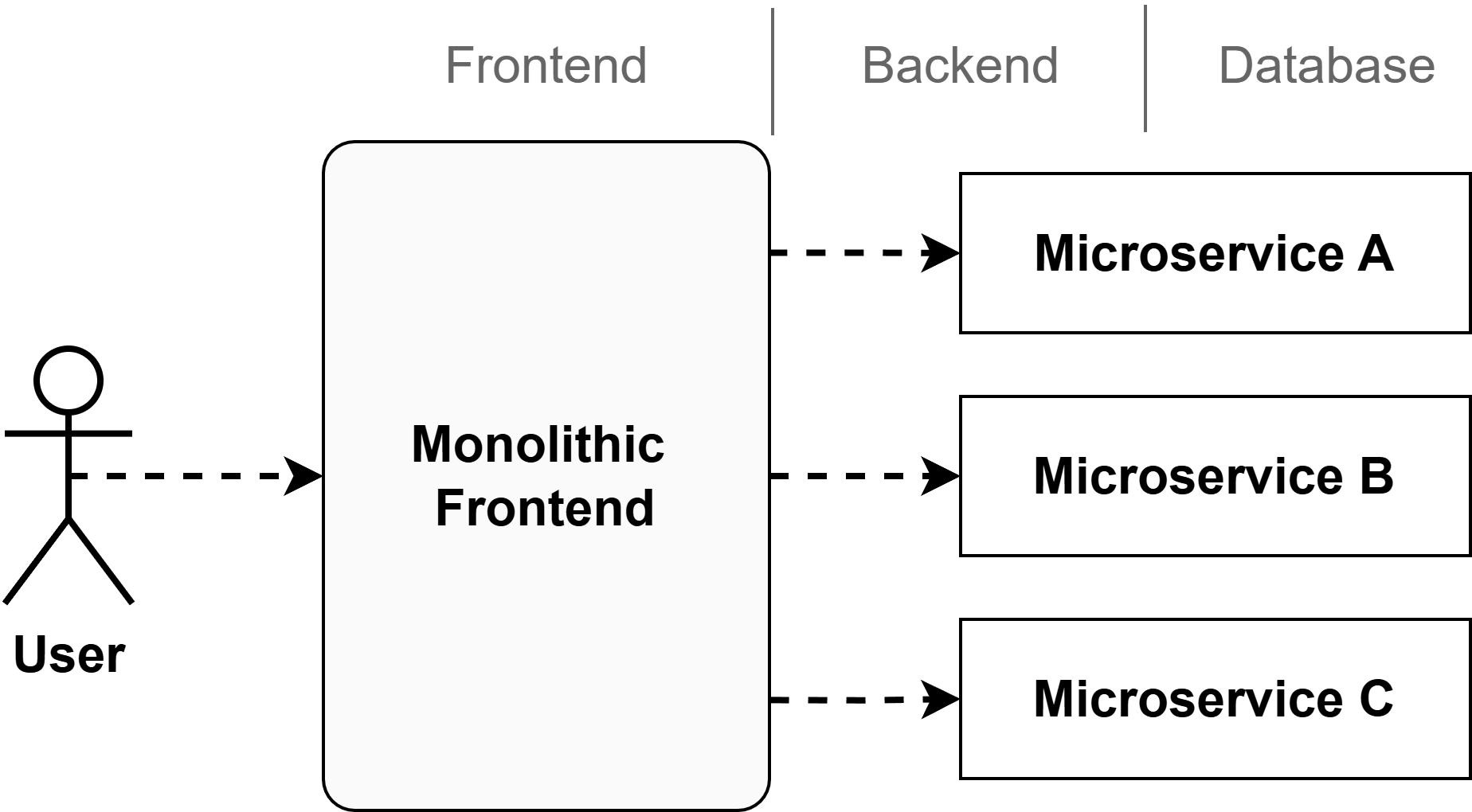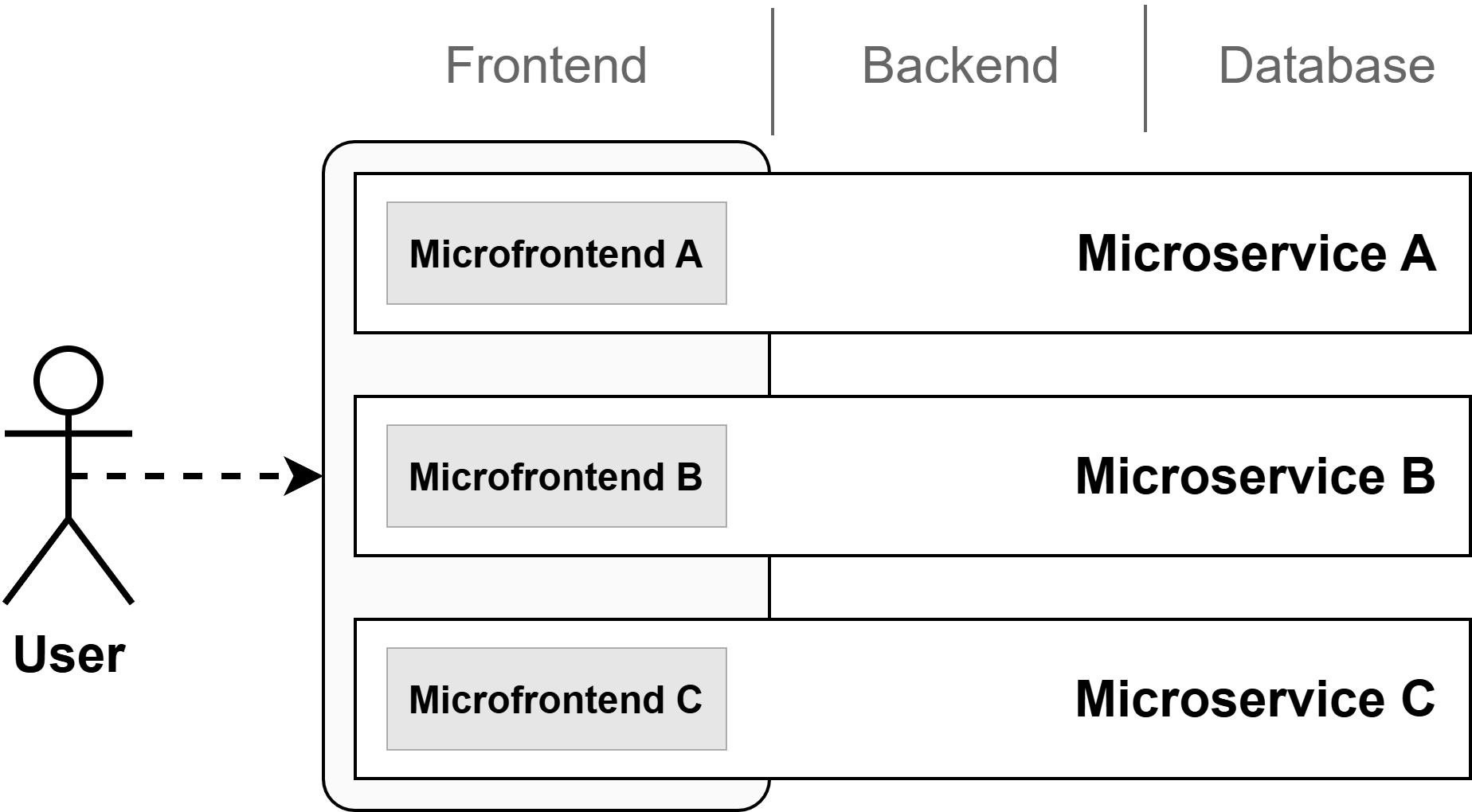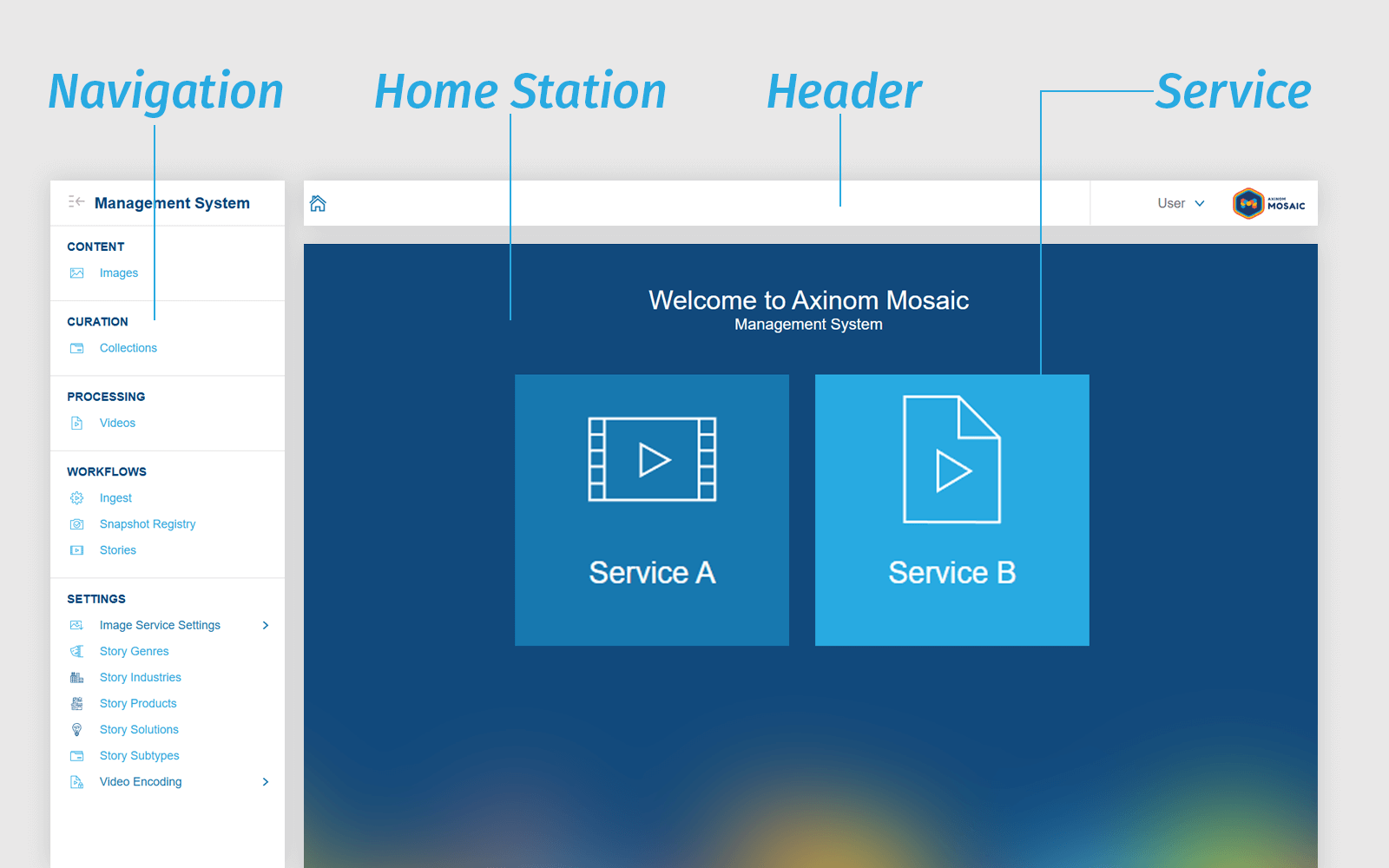This site is is currently under maintenance, please try again later
Mosaic leverages microfrontends for its management system. With microfrontends, every service can have its own frontend developed independently and integrated with other services at runtime.
Don’t have time?
Book a call

TRUSTED BY






In many organizations, microservices are adopted to make the backend more modular, scalable, and easier to develop and maintain. However, despite this backend flexibility, the frontend often remains a single, monolithic application that aggregates data and functionality from all the microservices.

Monolithic frontend with multiple microservices
A microfrontends approach can help solve these issues by allowing the frontend to be modularized in the same way as the backend. Each microservice can be paired with its own microfrontend component, which only interacts with its specific backend service. This setup allows teams to develop, test, and deploy frontend features independently, reducing dependencies and enhancing scalability.

Each microservice has its own microfrontend

In Mosaic, each microservice can provide its own microfrontend. The Management System is a shell for hosting microfrontends and organizing their collaboration.
Learn moreThe microfrontends idea goes even deeper - microfrontends can expose small components called “extensions”, which can be then reused by other microfrontends. On the screen below there is such example: the Media Service uses an extension from the Image Service for functionality around displaying a cover and modifying it.
Learn more
Don’t have time now?
Book
a call